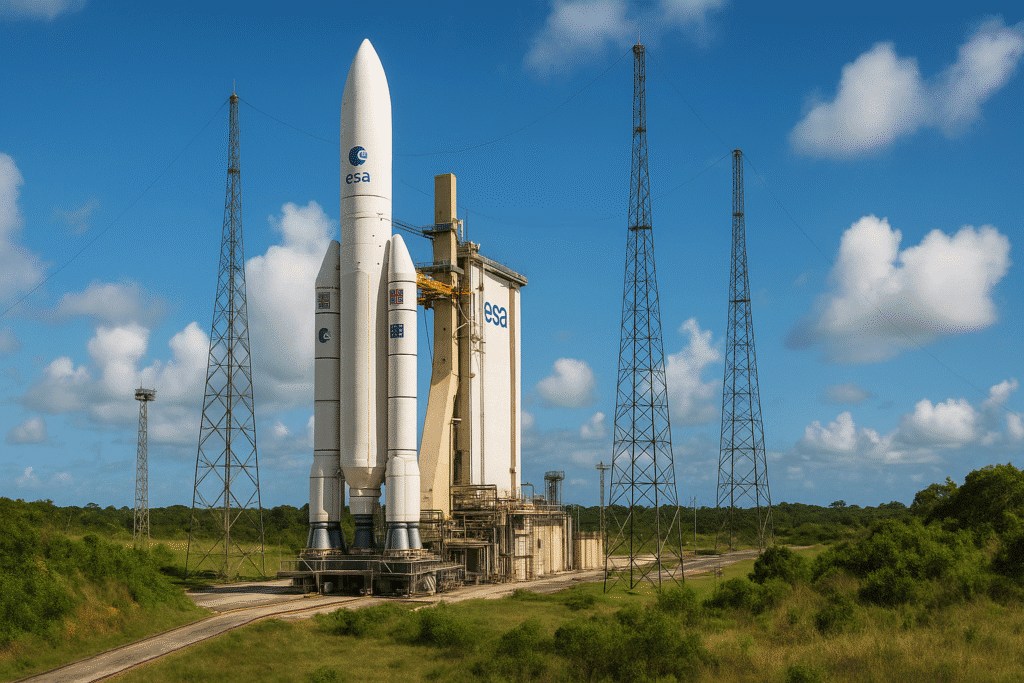A Major Leap for Europe’s Space Ambitions
On July 9, 2024, Europe celebrated a major achievement in space exploration with the successful launch of the Ariane 6 heavy-lift rocket from the European Spaceport in French Guiana. This milestone marks a significant turning point for the European Space Agency (ESA), positioning Europe to become a stronger competitor in the global space industry. The Ariane 6 is designed to carry heavier payloads at more affordable costs, addressing a long-standing challenge in the satellite launch market, which has traditionally been dominated by U.S. and Russian companies.
The Ariane 6’s success is seen as a game-changer for Europe’s space capabilities, as it allows the continent to break into the satellite launch market more effectively. The ability to offer reliable, cost-efficient launch services gives Europe a competitive edge, enabling it to serve a broader range of customers in space research, commercial ventures, and satellite deployment.
Strengthening Europe’s Role in Global Space Exploration
The successful launch of the Ariane 6 is not just a technological triumph but also a strategic win for Europe’s broader space ambitions. With the capability to transport larger payloads and at a more competitive cost, the rocket positions Europe to maintain and expand its role as a key player in the global space economy. ESA now has the opportunity to enhance its position in satellite launches, space exploration, and intercontinental communication networks.
Moreover, this achievement strengthens Europe’s standing in the international space community, demonstrating its growing technological prowess and innovation in cutting-edge fields. By reducing the cost of launching satellites and expanding its capabilities, Europe is better positioned to compete with other global players, including SpaceX and other private U.S. companies, as well as state-backed Russian space programs.
Opening New Frontiers in Satellite Launches and Research
The Ariane 6 is expected to open up new possibilities for European involvement in both commercial and scientific endeavors. The increased payload capacity and more affordable launch options mean that Europe can better meet the growing demand for satellite deployment in both the public and private sectors. These advances will provide more opportunities for European organizations to contribute to global satellite constellations, weather forecasting, Earth observation, and scientific missions.
Beyond commercial ventures, the successful Ariane 6 launch further bolsters Europe’s position in space research. With improved access to space, Europe can continue to participate in collaborative international space missions, space exploration initiatives, and long-term projects like planetary science, space telescopes, and deep space exploration.
A New Era for European Space Exploration
The Ariane 6’s successful debut represents a new chapter for Europe in the competitive and fast-evolving space industry. With advancements in rocket technology and satellite capabilities, the continent is poised to continue leading in areas such as satellite technology, space science, and even future manned space missions. The Ariane 6 launch is a testament to Europe’s commitment to strengthening its space exploration infrastructure and ensuring its place at the forefront of global space development.
This achievement not only signals Europe’s growing confidence in space exploration but also offers a pathway for future success, potentially transforming how Europe approaches global space missions and partnerships. As the world continues to push the boundaries of space exploration, Europe’s new capabilities promise to play a vital role in shaping the future of space technologies and international space collaboration.
